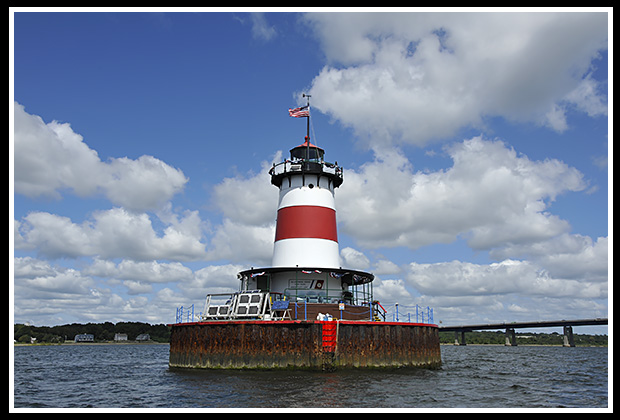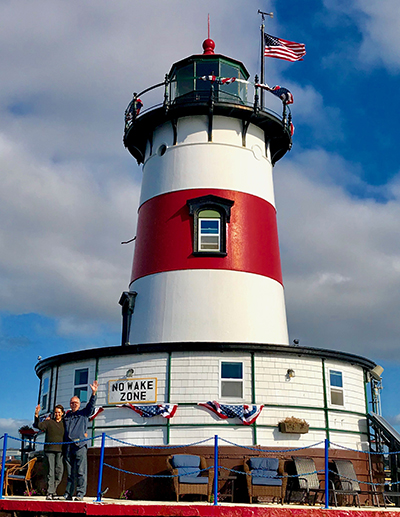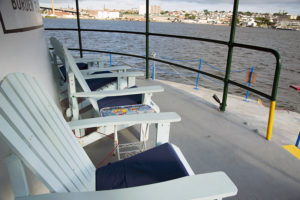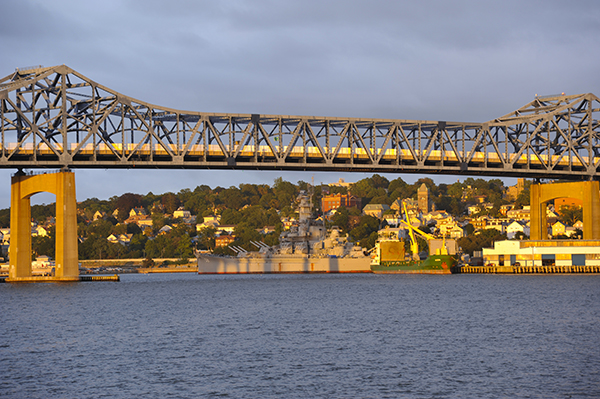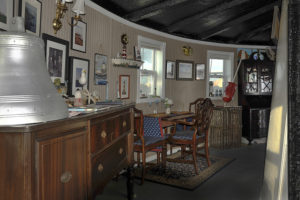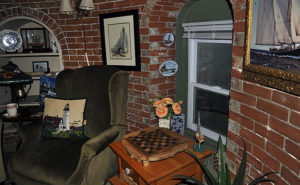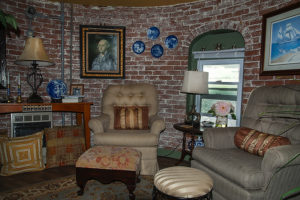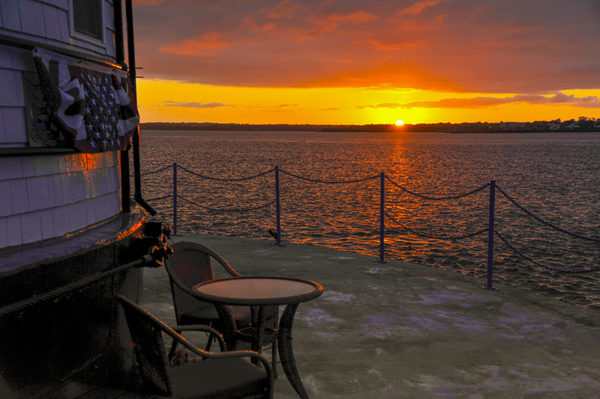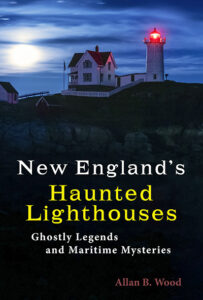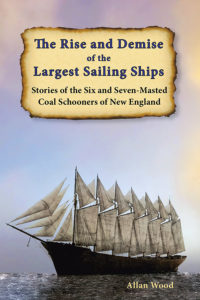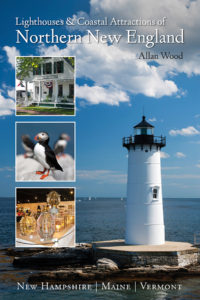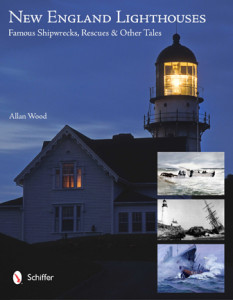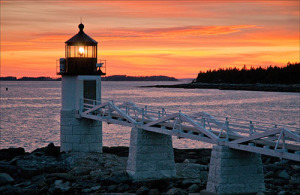Staying Overnight in a Lighthouse Tower Offshore at Borden Flats Light in Massachusetts
Sometimes, we need to give ourselves new experiences, feed our souls, help us grow, and take time to reflect on essential things that matter in our lives. My wife and I had the wonderful opportunity to stay overnight in late August at an offshore lighthouse tower, Borden Flats Lighthouse, in Fall River, Massachusetts. The owner, Kevin Ferias, wanted to share his passion for this unique, fully restored, and renovated lighthouse he purchased and provided a marvelous experience for us; we’ll remember and tell our friends for many years. The lighthouse was built in 1881 on a dangerous reef in the middle of the Taunton River to accommodate the ever-increasing shipping traffic as Fall River became a major player in the development of textiles during the Industrial Revolution. It was known as the “textile capital of the world.” The beacon was named after the Borden family, a fixture in the region for generations. However, today, it is known more for the trial of the century, in which Lizzy Borden was accused of killing her parents with an axe and was acquitted. There are some lighthouses in New England where visitors can sometimes stay overnight in mainly the keeper’s quarters in adjacent buildings where the keepers of these beacons would remain with their families and where most of these beacons were situated on the mainland or islands for easy access. However, there are only three current lighthouses in New England. Visitors can stay overnight in an offshore lighthouse, where the tower is built on top of an underwater reef and where access is directly from a boat. One is Borden Flats Light, another is Greens Ledge Light in Norwalk, and the third is Goose Rocks Lighthouse, off Vinalhaven Island, in Maine. The previous owner, James Nick Korstad of Portland, Oregon, purchased Borden Flats light at auction a decade ago after the lighthouse had fallen into disrepair. He painstakingly restored and renovated the beacon for about eight years. He was also responsible for most of the historic décor and furniture he brought to give visitors this unique experience. He set up the program for overnight stays so visitors could experience what previous keepers enjoyed. Today, with Kevin Ferias continuing the tradition and vision of his predecessor, visitors can stay overnight as part of the Light Keepers Overnight Educational Program. In contrast, guest light keepers can relax and enjoy the peaceful existence the earlier light keepers enjoyed. Guests can assist in an emergency near the lighthouse by dialing 9-1-1 and voluntarily ensuring the beacon works in the lantern room. We were also instructed to turn off the lights on the first floor before bed to conserve solar energy. The lighthouse is still a working aid to navigation for the Coast Guard, and they are responsible for managing the beacon light itself. Those who stay overnight will know that funds from their overnight stay go towards continued preservation and maintenance of the lighthouse property; Kevin purchased this property not for financial gain but to share with others—paying it forward. It only took a few minutes to reach the lighthouse from the marina and a small climb up about a half dozen steel ladder rungs from the boat to get to the deck. Most anyone in any decent shape will have no problem with this. Kevin has such a kind and very comedic nature, and his enthusiasm and pride as the current lighthouse owner are infectious as he provided us with a tour of the safety measures and the historical nature of Borden Flats light, with some great stories. Before he left for the mainland, Kevin brought his boat around the other side of the tower, had us stand on the main deck, and took some great pictures of us in front of the tower, which he sent to my phone as a keepsake for our stay. The images with us, dwarfed by the five floors of the lighthouse tower, provided an excellent perspective for us to share with family and friends. The light uses solar energy, and the deck lays out panels. There is also a grill nearby for cooking outside. There are various chairs and small tables for visitors to relax and enjoy. We spent most of the time relaxing on the wooden Adirondack chairs that sheltered us from the gusty winds that were blowing over the water that late summer day, but the following day, as the winds subsided, we enjoyed relaxing on the lounge chairs, watching the boats go by and birds feeding. The view towards Fall River and the marina was lit up by the setting sun across the Taunton River, illuminating the marina along the shore and the ships at Battleship Cove under the Braga Bridge nearby, which you could visit for the day. It was a great experience to see how the greatest generation lived on these magnificent vessels, including the USS Massachusetts, during World War II and the Cold War era. We watched various seagulls, terns, and cormorants flying close by the water and diving in to capture fish from a passing school. During our entire stay, no birds perched or pooped on any part of the lighthouse structure, even while we were eating outdoors, which is quite rare, and the fact there are no bird droppings to be found anywhere on the lighthouse provides a great mystery. It is believed that the spirits of one of the previous lighthouse keepers, John H. Paul (mentioned below), and a little girl, Lucy, whom a keeper tried to save when her family’s boat capsized nearby, guard and protect the lighthouse, and any inhabitants from harm, keeping everything and everyone safe. They are friendly, benign spirits and don’t show themselves or anything like that. We never heard or saw anything strange during our stay; we just enjoyed the peaceful quiet. Coming into the first floor of the five floors of the tower, guests are welcomed with lighthouse images, its fog bell, and a unique bathroom that uses pumped water to conserve the limited resources of water that one might find in an expensive RV vehicle. No showers are provided in this rustic experience, but a sink is available for washing. There is a photo of Keeper John H. Paul with his three sons, who stayed with the lighthouse from 1912 to 1927 and was involved with one rescue, earning him a bronze Carnegie lifesaving medal. The kitchen on the same floor is decorated in a style reminiscent of the 1950s, along with the entire decor on all floors, but with outlets to charge your phone or tablet, phone access with a good signal, and a Keurig coffee machine for those not ready to disconnect totally. However, for those who want to create coffee made with a percolator, as my father used every day until his passing a few years ago, there is a coffee percolator you can use. We decided to dive into the experience and create percolated coffee; it was an excellent, strong coffee that rivals any Starbucks connoisseur. The second floor is a living room that is mostly for reading. Access to all floors is a spiral stairway that lights up with motion sensors for safety and lighthouse decorations along the walls. One of the architectural marvels of the lighthouse is the outer caisson over the enclosed brick, which protects the lighthouse from lightning strikes. It acts as a grounding device to dissipate the energy. However, what is interesting is that the brick walls are over a foot thick on the bottom floor, but as you travel up the stairs to the rooms, the brick wall thickness decreases to about a few inches in the lantern room. My wife and I spent most of the night sitting and reading in the living room, enjoying the tranquil atmosphere. My wife brought some magazines, and I brought an original copy of one of Edward Rowe Snow’s books (of “Flying Santa” fame, who would drop presents from an airplane during Christmas to help isolated keepers) entitled “New England Sea Tragedies” which I had received after my aunt was passing a few years ago. The book was published in 1960 and was a birthday gift to my grandfather from my uncle in 1963. As I never had a chance to start reading it, the stories from New England’s 18th and 19th centuries provided a lovely backdrop to connect with the lighthouse. Coincidentally, this beacon’s last full-time light keepers left in 1963 when it had become fully automated. For those who want current amenities, there is a TV and DVD player on the third floor as the entertainment room. This room also acts as a reading room, with a collection of books and DVDs, and everything is lighthouse-themed. The fourth floor was the bedroom or “Watchroom” and was very comfortable. It was very windy when we came to the lighthouse, and you could hear the flapping of the flags draped around the outer tower, but even though I’m a light sleeper, the tower was very quiet and was extremely comfortable, and we both had a great night sleep. It was amazing to find how quiet this lighthouse tower was, a testimony to its original construction and current renovation. The fresh air was invigorating, and you could open the portal in the bedroom or on each floor to open or close the windows. The top floor was the lantern room, where you got a 360-degree view and could go outside around the protected deck, although a bit too windy for us. On a quiet night, guests could sit outside at the top of the tower, protected by the railings, and watch the sunset—a great way to get in touch with Mother Nature. The light is a new, strange, but functional replacement by the Coast Guard and looks like a little “flying saucer” disc shape (VLB-44 Optic). This is the new technology for the “upgraded” beacon that once had a fourth-order fresnel lens until 1977. The previous “plastic” VRB-25 lens was removed in 2017 and is used at Beavertail Lighthouse in Rhode Island. It was sad to leave the next day, as we just hung out in the lounge chairs on the first-floor deck, watching the boats, birds, and traffic on the shore. Kevin’s assistant, John, who also goes by “JC” and is Kevin’s right-hand man, picked us up and brought us to shore. He is a retired musician who enjoys life. I watched and tried to photograph the building cumulus clouds behind the lighthouse as a parting shot as we sped away. The experience at this lighthouse was quite memorable. It was a great escape from the daily hustle and bustle we have been thrown into over the years. I appreciate Kevin’s hospitality, passion, and dedication to preserving this 140-year-old lighthouse. Find something you’re passionate about, share it, and the spiritual and emotional rewards will help ground you in life. Please pay it forward.Reserving Your Stay at the Lighthouse
For more information about staying at Borden Flats lighthouse, visit Kevin’s website at BordenFlats.com where you’ll find lots of history, some great photos he has taken of the lighthouse, and where you can reserve to stay overnight. The lighthouse is available for overnight stays for at least seven months out of the year. You won’t be disappointed. Feed your soul! Here are a few photos of and from Borden Flats lighthouse. Enjoy your stay! Allan Wood2025 Newsflash! Borden Flats Lighthouse and its very successful overnight lodging business is going up for sale! Any inquiries contact Kevin above.
Books to Explore
New England’s Haunted Lighthouses: Ghostly Legends and Maritime MysteriesDiscover the mysteries of New England’s haunted lighthouses! Uncover ghostly tales of lingering keepers, victims of misfortune or local shipwrecks, lost souls, ghost ships, and more. Many of these accounts begin with actual historical events that later lead to unexplained incidents.
There are many additional details here on Nick Korstad’s encounters while renovating Borden Flats Lighthouse and about the benign spirits themselves. Immerse yourself in the tales associated with these iconic beacons! The Rise and Demise of the Largest Sailing Ships: Stories of the Six and Seven-Masted Coal Schooners of New England. In the early 1900s, New England shipbuilders constructed the world’s largest sailing ships amid social and political reforms. These giants were the ten original six-masted coal schooners and one colossal seven-masted vessel, built to carry massive quantities of coal and building supplies and measured longer than a football field! This self-published book, balanced with plenty of color and vintage images, showcases the historical accounts that followed these mighty ships. Available also from bookstores in paperback, hardcover, and as an eBook for all devices.
Book – Lighthouses and Coastal Attractions in Southern New England: Connecticut, Rhode Island, Massachusetts
